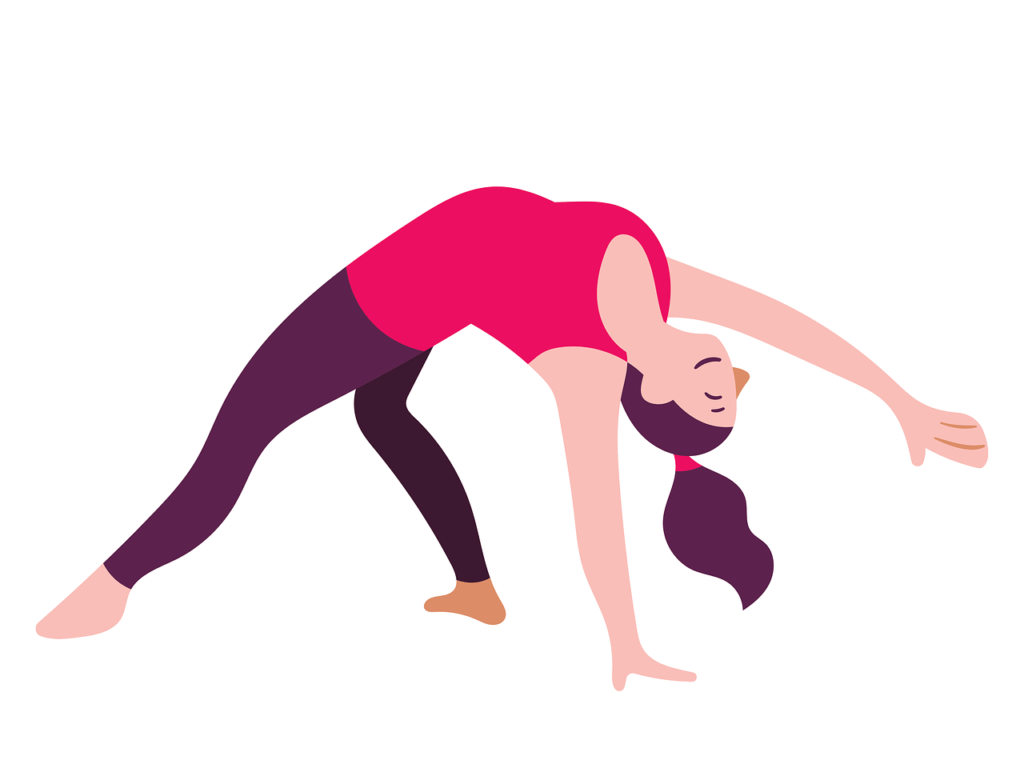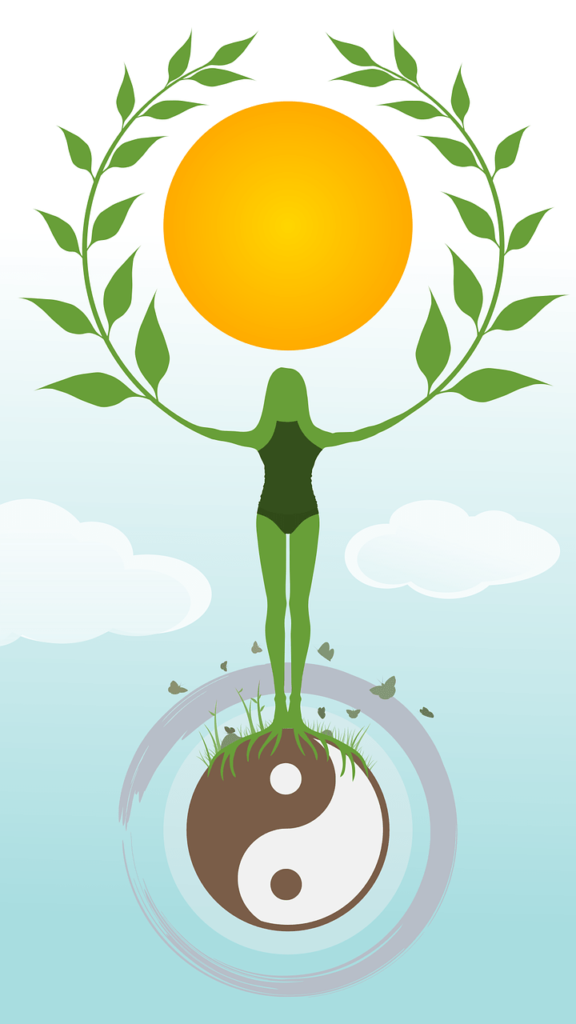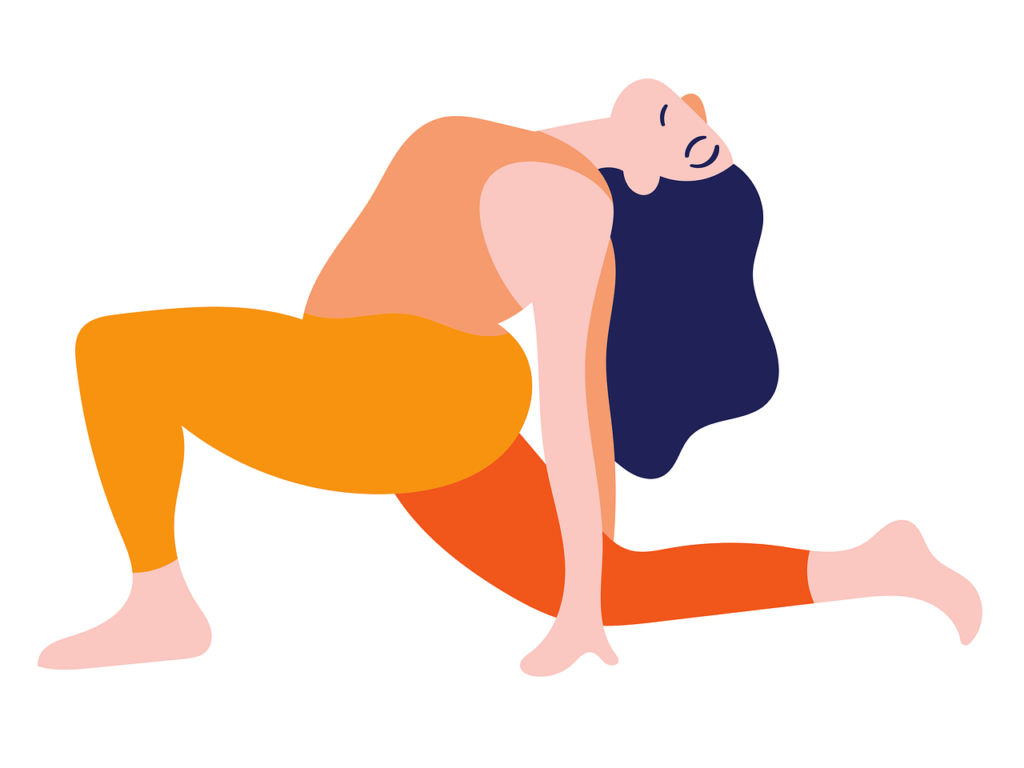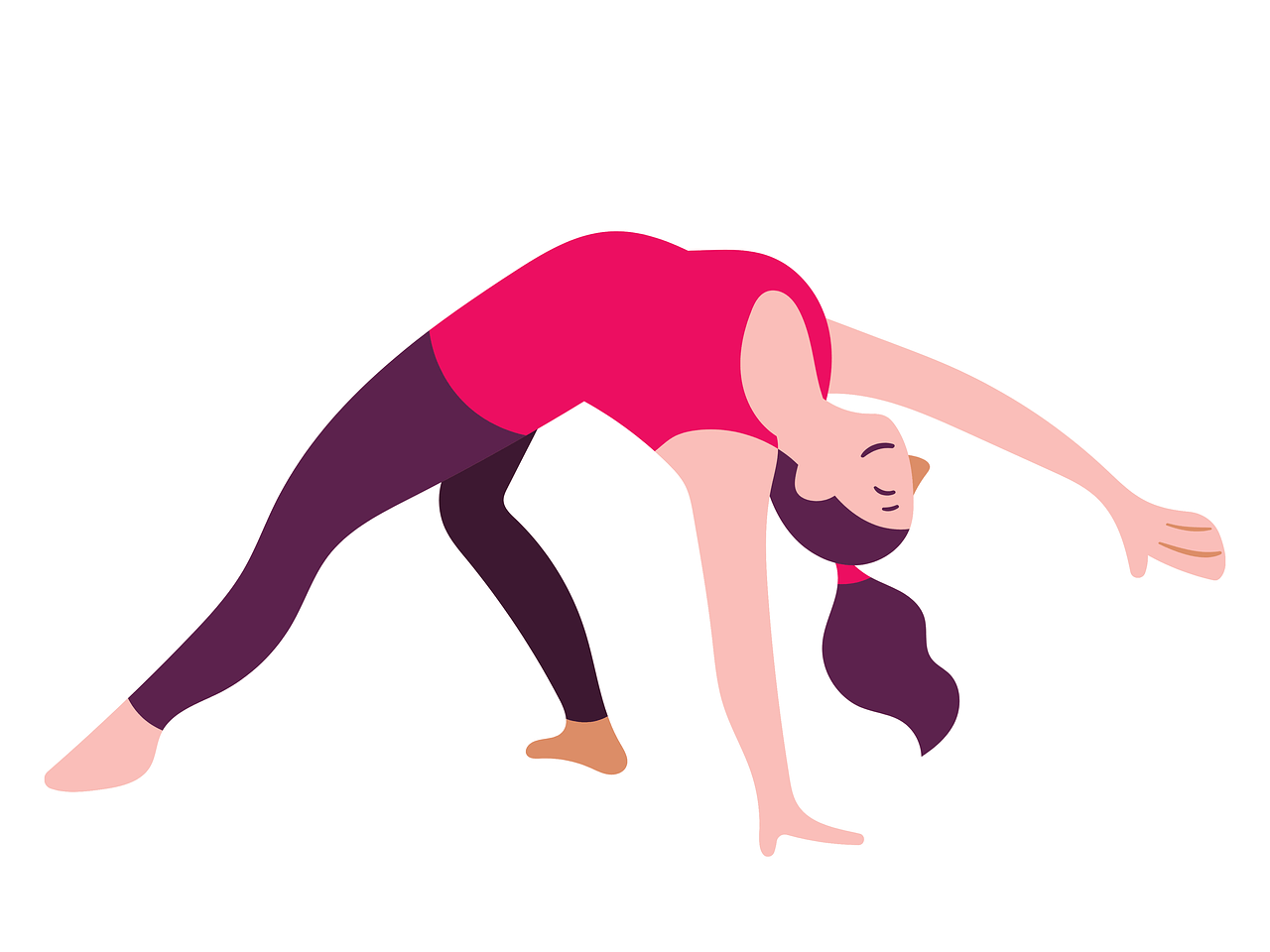Yin Yoga is a unique and restorative practice that goes beyond the physical aspects of traditional yoga. By holding gentle poses for longer durations, Yin Yoga provides deep stretching and relaxation, targeting the connective tissues in the body. Not only does it enhance flexibility and improve circulation, but it also allows for emotional release and mental clarity. In this article, we will explore the numerous benefits and practices of Yin Yoga, uncovering its transformative effects on both the body and mind. Yin Yoga is a gentle and introspective style of yoga that focuses on long-held poses and deep stretches. While it may not be as dynamic or fast-paced as other forms of yoga, it offers a wide range of health and mental benefits. In this article, we will explore the various benefits of Yin Yoga, the physical practices involved, and the mindful techniques that are incorporated. We will also discuss how Yin Yoga can help to balance the Yin and Yang energies within the body, and how it can be used as a tool for stress relief, flexibility, joint mobility, energy flow, and organ health. Additionally, we will explain how Yin Yoga can complement other yoga practices and how you can incorporate Yin Yoga into your daily life. By the end of this article, you will have a thorough understanding of the numerous advantages of practicing Yin Yoga and how it can positively impact your overall well-being.

Health Benefits of Yin Yoga
Improved flexibility
One of the key benefits of practicing Yin Yoga is improved flexibility. The long-held poses in Yin Yoga gently stretch and lengthen the muscles, tendons, and fascia, which can gradually increase flexibility over time. Unlike other forms of yoga that focus on active stretching, Yin Yoga relies on passive stretching, allowing the body to relax and release tension more deeply.
Increased circulation
Another significant health benefit of Yin Yoga is increased circulation. As you hold the poses for an extended period, the pressure on the connective tissues stimulates blood flow and encourages circulation throughout the body. This improved circulation can aid in better nutrient delivery, waste removal, and overall cell health.
Enhanced joint mobility
Yin Yoga also promotes enhanced joint mobility. By targeting the deep connective tissues and joints, Yin Yoga helps to lubricate the joints and maintain their health. Regular practice can prevent joint stiffness and reduce the risk of pain and inflammation, allowing for greater range of motion and ease in movement.
Stress relief
Yin Yoga is known for its ability to provide stress relief. By slowing down and spending prolonged periods in each pose, Yin Yoga activates the parasympathetic nervous system, which is responsible for promoting a relaxation response. This activates the body’s “rest and digest” mode, reducing stress, anxiety, and tension.
Improved energy flow
Practicing Yin Yoga can help to improve the flow of energy within the body. According to traditional Chinese medicine, energy flows through meridian channels in the body, and Yin Yoga targets these channels to stimulate energy flow and promote balance. By releasing blockages and allowing energy to flow freely, Yin Yoga can increase vitality and overall well-being.
Better organ health
Yin Yoga also has a positive impact on organ health. As you hold the poses, you apply gentle pressure to different areas of the body, stimulating the organs and improving their functionality. This can support digestion, circulation, and immune system function, leading to improved overall organ health.
Balanced energy levels
Another benefit of Yin Yoga is the balancing of energy levels. In Yin Yoga, the focus is on slowing down and finding stillness. This allows the body to rest and restore, bringing balance to the Yin and Yang energies within. By balancing these energies, Yin Yoga can help to regulate energy levels and promote a sense of equilibrium.
Enhanced relaxation response
Lastly, Yin Yoga enhances the relaxation response of the body. Through the extended holds, breath awareness, and focus on sensations, Yin Yoga cultivates a state of deep relaxation and mindfulness. This can help to alleviate stress, promote better sleep, and enhance overall relaxation.
Mental Benefits of Yin Yoga
Calms the mind
One of the significant mental benefits of practicing Yin Yoga is the ability to calm the mind. The slow and meditative nature of Yin Yoga allows you to enter a state of stillness and quiet the constant chatter of the mind. This can help to reduce mental restlessness and promote a sense of peace and tranquility.
Reduces anxiety and depression
Yin Yoga has been found to be effective in reducing feelings of anxiety and depression. The deep stretches and extended holds in Yin Yoga activate the parasympathetic nervous system, which helps to dampen the stress response and promote relaxation. This can have a positive impact on mood and emotional well-being.
Enhances mindfulness
Incorporating mindfulness into your daily life can have numerous benefits, and Yin Yoga is a powerful tool for enhancing mindfulness. During Yin Yoga practice, you are encouraged to cultivate present-moment awareness, observe sensations in the body, and stay fully present with the breath. This heightened state of mindfulness can carry over into your day-to-day life, promoting greater clarity and focus.
Boosts mood
Yin Yoga can also have a significant impact on mood. The combination of physical stretches, deep breathing, and relaxation can release endorphins, the body’s natural mood-boosting chemicals. Regular practice can help to uplift your mood, increase positivity, and promote emotional well-being.
Promotes self-awareness
Practicing Yin Yoga involves turning inward and tuning into the sensations and feedback from your body. This introspective practice promotes self-awareness, allowing you to develop a deeper understanding of your physical and emotional needs. By cultivating self-awareness, you can make more intentional choices and take better care of yourself.
Improves focus and concentration
The practice of Yin Yoga requires focus and concentration as you hold each pose for an extended period. This cultivates mental discipline and trains the mind to stay present and focused. Over time, this improved focus and concentration can extend beyond your yoga practice and enhance your ability to concentrate in daily activities.
Physical Practices of Yin Yoga
Reclining poses
Reclining poses in Yin Yoga involve lying down on your back and relaxing into the pose for an extended period. These poses gently stretch the back, chest, and hips, and promote relaxation and release.
Seated poses
Seated poses in Yin Yoga involve sitting on the floor and holding a stretch or twist for an extended duration. These poses stretch the hips, lower back, and hamstrings, promoting flexibility and improved posture.
Supine poses
Supine poses in Yin Yoga involve lying on your back and extending the legs or bending one knee while resting the foot on the opposite thigh. These poses stretch the hips, groins, and inner thighs, and help to release tension and tightness in these areas.
Forward bends
Forward bends in Yin Yoga involve folding forward from the hips and reaching for the feet or legs. These poses stretch the entire back body, including the hamstrings, calves, and spine. Forward bends promote relaxation, release tension in the back, and enhance flexibility.
Twists
Twists in Yin Yoga involve rotating the spine while keeping the hips grounded. These poses help to improve spinal mobility, release tension in the back muscles, and stimulate digestive organs.
Hip openers
Hip openers in Yin Yoga involve poses that target the hips and outer thighs. These poses help to release tension and tightness in the hips, improve flexibility, and promote better posture.
Gentle backbends
Gentle backbends in Yin Yoga involve arching the spine and opening the chest. These poses stretch the front body, counteracting the effects of sitting for long periods, and promoting better posture.
Stretching and lengthening
Overall, Yin Yoga focuses on gentle stretching and lengthening of the muscles, tendons, and fascia. By embracing slow and passive stretches, Yin Yoga allows for greater relaxation and release of tension in the body.
Mindful Practices in Yin Yoga
Extended holds
One of the key mindful practices in Yin Yoga is the extended holds in each pose. Unlike other forms of yoga that emphasize movement and flow, Yin Yoga encourages you to stay in each pose for an extended period, typically ranging from two to five minutes. This extended hold allows you to fully experience the sensations in the body, observe any resistance or discomfort, and cultivate patience.
Focus on breath awareness
In Yin Yoga, breath awareness is an essential aspect of the practice. By directing your attention to the breath, you can anchor yourself in the present moment and cultivate a sense of calm and relaxation. Paying attention to the quality and depth of your breath can help you connect with the body’s sensations and deepen your practice.
Observation of sensations
Another mindful practice in Yin Yoga is the observation of sensations in the body. As you hold each pose, you are encouraged to bring your attention to the physical sensations, such as stretching, tension, or warmth. Observing these sensations without judgment allows you to develop a deeper connection with your body and gain insight into your physical and emotional well-being.
Practice of non-judgment
Non-judgment is a fundamental aspect of mindfulness in Yin Yoga. As you hold each pose and observe the sensations, it is important to approach them with a sense of curiosity and acceptance, rather than judging them as good or bad. This practice of non-judgment cultivates self-compassion and helps you develop a mindful attitude towards your body and experiences.
Cultivation of patience
Patience is a key aspect of Yin Yoga practice. Holding poses for an extended period can be challenging, both physically and mentally. However, practicing patience allows you to embrace the discomfort and observe your body’s response without rushing or forcing. Cultivating patience on the mat can extend to other areas of your life, helping you navigate challenges with grace and resilience.
Exploring edge and discomfort
In Yin Yoga, there is an emphasis on exploring your edge and discomfort. While it is important to listen to your body and avoid pain, Yin Yoga encourages you to gently explore your limits and venture into the discomfort. By doing so, you can gradually expand your range of motion, deepen your practice, and develop a greater sense of self-awareness.

Balancing Yin and Yang Energies
Understanding Yin and Yang
Yin and Yang are two fundamental energies in Chinese philosophy and are present in all aspects of life, including the human body. Yin represents the feminine, receptive, cooling, and introspective qualities, while Yang represents the masculine, active, warming, and outwardly focused qualities. Yin and Yang are interconnected and in constant flux, and finding balance between them is essential for overall well-being.
Importance of balance
Balancing Yin and Yang energies is essential for maintaining optimal health and well-being. When Yin and Yang are in balance, there is a harmonious flow of energy within the body, leading to vitality, flexibility, and joy. However, an imbalance in Yin and Yang can manifest as physical or emotional disharmony and may lead to various health issues.
Interplay of opposing energies
In Yin Yoga, there is an acknowledgment of the interplay between Yin and Yang energies within the body. While other forms of yoga may predominantly focus on the Yang aspects of strength and movement, Yin Yoga provides an opportunity to cultivate the Yin qualities of stillness, surrender, and introspection. By incorporating both Yin and Yang practices into your yoga routine, you can create a holistic and balanced practice that honors both energies.
Finding harmony within
Finding harmony within the interplay of Yin and Yang energies is a continual process of self-awareness and self-care. Yin Yoga offers a space for you to explore the quieter, more receptive aspects of yourself, promoting inner balance and harmony. By cultivating awareness and embracing both your Yin and Yang qualities, you can create a more balanced and fulfilling life.
Incorporating both in yoga practice
To incorporate both Yin and Yang practices into your yoga routine, you can alternate between dynamic, flowing styles of yoga that focus on strength and movement, and Yin Yoga for stillness and deep stretches. This balance allows you to experience the benefits of both energies and create a well-rounded practice that supports your physical, mental, and emotional well-being.
Yin Yoga for Stress Relief
Activating parasympathetic nervous system
Yin Yoga is an excellent practice for stress relief as it activates the parasympathetic nervous system. This part of the autonomic nervous system is responsible for the body’s relaxation response, promoting a state of rest and digest. By practicing Yin Yoga, you can tap into this relaxation response and counteract the effects of chronic stress.
Relaxation response in deep stretches
The extended holds and deep stretches in Yin Yoga trigger the relaxation response in the body. As you relax into each pose, the body shifts from the sympathetic nervous system’s fight-or-flight response to the parasympathetic nervous system’s rest-and-digest mode. This shift promotes a sense of calm, reduces stress hormones, and induces relaxation.
Releasing tension from connective tissues
Yin Yoga specifically targets the connective tissues, such as ligaments, tendons, and fascia. These tissues can hold onto tension and tightness, especially during periods of stress. The slow and passive stretches in Yin Yoga gently release this tension, promoting physical relaxation and easing the body’s response to stress.
Reducing cortisol levels
Cortisol, also known as the stress hormone, can accumulate in the body during times of chronic stress. Yin Yoga can help to reduce cortisol levels by activating the relaxation response and promoting a state of calm and relaxation. Lowering cortisol levels can have a positive impact on overall well-being and prevent the negative effects of chronic stress.
Promoting overall relaxation
Overall, Yin Yoga promotes a state of relaxation and calm. By dedicating time to slow down, release tension, and tap into the body’s natural relaxation response, you can create a sense of peace and tranquility in your daily life. Regular Yin Yoga practice can help you better manage stress, improve sleep, and enhance overall well-being.

Yin Yoga for Flexibility and Joint Mobility
Targeting deep connective tissues
Yin Yoga is particularly effective in targeting the deep connective tissues of the body, including tendons, ligaments, and fascia. These tissues are less elastic than muscles and require longer holds to be properly stretched. Through the gentle and sustained stretches in Yin Yoga, you can gradually lengthen and release these tissues, leading to increased flexibility.
Lengthening and releasing fascia
Fascia is a dense connective tissue that surrounds muscles and organs. When it becomes tight or restricted, it can limit mobility and lead to discomfort or pain. Yin Yoga’s passive stretches help to lengthen and release the fascia, allowing for improved mobility and reduced tension in the body.
Increasing range of motion
By regularly practicing Yin Yoga, you can increase your range of motion. The long holds in Yin Yoga poses gently stretch and lengthen the muscles and connective tissues, gradually improving flexibility and joint mobility. Whether you are a beginner or an experienced yogi, Yin Yoga can help you safely explore and expand your range of motion.
Improving joint lubrication
Joint lubrication is crucial for maintaining joint health and preventing stiffness and pain. Yin Yoga helps to improve joint lubrication through the sustained stretches and gentle pressure applied to the joints. This can enhance joint mobility and reduce the risk of degenerative conditions such as arthritis.
Prevents joint stiffness and pain
Regular practice of Yin Yoga can help prevent joint stiffness and pain. The deep stretches and gentle pressure in Yin Yoga promote the health of the joints, prevent the buildup of scar tissue, and maintain the range of motion. By regularly practicing Yin Yoga, you can maintain the suppleness of your joints, reduce the risk of injury, and alleviate discomfort or pain.
Yin Yoga for Energy Flow and Organ Health
Stimulating meridian energy channels
In traditional Chinese medicine, it is believed that energy flows through specific channels called meridians. Yin Yoga targets these meridian energy channels through specific poses and holds, stimulating the flow of energy. By encouraging the free flow of energy, Yin Yoga can support overall organ health and promote balance in the body.
Promoting balanced energy flow
Balanced energy flow is essential for overall well-being, and Yin Yoga can help to promote this balance. By holding poses and stretching specific areas, Yin Yoga works on stimulating and balancing the flow of energy within the body. This balance can lead to improved vitality, emotional stability, and a sense of harmony.
Enhancing overall organ health
Yin Yoga has a positive impact on organ health. As you hold poses and apply gentle pressure to various areas of the body, you stimulate the organs, supporting their optimal functioning. This can enhance digestion, circulation, detoxification, and immune system function, leading to improved overall organ health.
Supporting immune system function
The immune system plays a crucial role in protecting the body against illness and disease. Yin Yoga can support immune system function by reducing stress, promoting relaxation, and stimulating the flow of energy throughout the body. By practicing Yin Yoga regularly, you can help to strengthen your immune system and enhance your body’s ability to fight off infections and maintain good health.
Improving digestion and circulation
Yin Yoga can have a positive impact on digestion and circulation. By stretching and stimulating the abdominal area, Yin Yoga supports healthy digestion and helps to alleviate digestive issues such as bloating and constipation. Additionally, the gentle pressure applied to the body in Yin Yoga poses promotes circulation, improving nutrient delivery, waste removal, and overall cell health.
Yin Yoga as a Complement to Yang Practices
Balancing high-intensity activities
Yin Yoga can act as a balancing force for high-intensity activities such as running, weightlifting, or other vigorous forms of exercise. While these activities are important for cardiovascular health and strength, they can be physically demanding and put stress on the body. By incorporating Yin Yoga into your routine, you can counterbalance the Yang energy of these activities with the Yin qualities of stillness and relaxation.
Restoring energy after yang practices
After engaging in yang practices such as intense workouts or energetic yoga flows, it is essential to restore energy and allow the body to recover. Yin Yoga can be an excellent tool for post-workout recovery by promoting relaxation, soothing the nervous system, and supporting muscular recovery. By incorporating Yin Yoga into your post-exercise routine, you can replenish your energy levels and prevent burnout.
Preventing burnout and exhaustion
In today’s fast-paced and high-stress world, burnout and exhaustion are common experiences. Yin Yoga can help prevent burnout by providing a space for you to slow down, relax, and recharge. The nurturing and calming nature of Yin Yoga can help to reduce stress levels, restore energy, and promote emotional well-being, ensuring that you have the resources to cope with life’s demands.
Respecting the body’s need for recovery
Listening to your body and respecting its need for recovery is essential for maintaining long-term health and well-being. Yin Yoga encourages you to tune into the body’s signals and honor its need for rest and restoration. By incorporating regular Yin Yoga practice into your routine, you can establish a healthy relationship with your body and prioritize self-care and recovery.
Creating a holistic and balanced practice
By incorporating both Yin and Yang practices into your yoga routine, you can create a holistic and balanced practice that nurtures both your body and mind. The combination of dynamic, active practices and restorative, introspective practices allows you to experience the benefits of movement, strength, relaxation, and stillness. This holistic approach promotes physical health, mental clarity, and overall well-being.
Incorporating Yin Yoga into Daily Life
Adding short yin sessions to the day
Incorporating Yin Yoga into your daily life doesn’t have to be time-consuming. You can add short Yin Yoga sessions to your day by dedicating just a few minutes to gentle stretching and relaxation. Whether it’s in the morning, during a work break, or before bedtime, even a brief Yin Yoga practice can help you find moments of calm and self-care in your hectic schedule.
Practicing yin poses at home
Yin Yoga can be easily practiced at home, making it accessible to everyone. With the help of online resources, books, or a qualified instructor, you can learn and practice Yin Yoga poses in the comfort of your own home. Establishing a home Yin Yoga practice allows you to tailor the practice to your needs, preferences, and schedule.
Finding yin in other activities
Yin qualities can be found in activities beyond the yoga mat. Engaging in quiet hobbies such as reading, journaling, or taking a leisurely walk in nature can provide moments of stillness and introspection. By incorporating more yin activities into your daily life, you can create an environment that supports relaxation, self-reflection, and balance.
Creating a calming yin environment
Creating a calming yin environment can enhance your Yin Yoga practice and promote relaxation in your daily life. You can create such an environment by dimming the lights, playing soft music, using essential oils, or surrounding yourself with calming objects or imagery. Designating a space in your home that is dedicated to yin activities can create a sanctuary for relaxation and rejuvenation.
Maintaining consistency in practice
Consistency is key when incorporating Yin Yoga into your daily life. Aim to practice Yin Yoga regularly, whether it’s a few minutes each day or longer sessions a few times per week. By maintaining consistency, you can experience the cumulative benefits of Yin Yoga and establish a sustainable self-care routine.
In conclusion, Yin Yoga offers numerous health and mental benefits, making it an excellent addition to any wellness routine. From improved flexibility and joint mobility to stress relief and enhanced energy flow, Yin Yoga can support your overall well-being. By incorporating Yin Yoga poses and mindful practices into your daily life, you can experience the profound effects of this gentle and introspective form of yoga. So, take the time to slow down, tune into your body, and embrace the calming and rejuvenating practice of Yin Yoga. Your body and mind will thank you.

